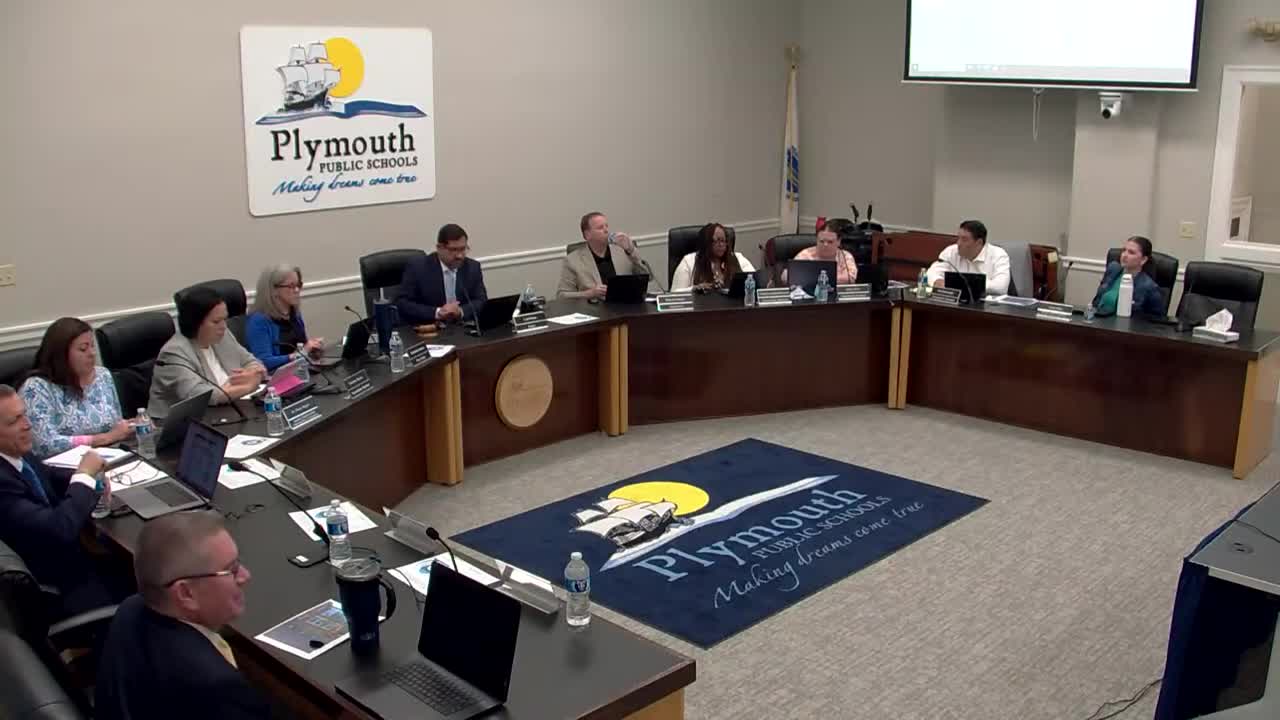Plymouth district examines transportation efficiency with Rich Labrie's comprehensive report
June 17, 2025 | Plymouth Public Schools, School Boards, Massachusetts
This article was created by AI summarizing key points discussed. AI makes mistakes, so for full details and context, please refer to the video of the full meeting. Please report any errors so we can fix them. Report an error »

The Plymouth Public Schools School Committee meeting on June 16, 2025, focused on a comprehensive transportation efficiency report presented by Rich Labrie from Alliance Education Associates. The report aimed to evaluate the district's transportation system, which has become a significant expense, and to provide recommendations for improvement.
Labrie highlighted that while Plymouth is experiencing population growth, school enrollment is declining, a trend seen in many suburban Boston communities. He noted that the district covers a large geographic area of 135 square miles, which complicates transportation efficiency. Key factors influencing transportation include the number of students eligible for free transportation, the configuration of bus routes, and community expectations for service quality.
The report revealed that the district is currently utilizing only about 40% of the available bus seats, indicating inefficiencies in ridership. Labrie emphasized that the existing bell schedule limits the district's ability to maximize bus capacity, as the time available for transportation is nearly fully utilized. He cautioned that while the transportation system is operating as efficiently as possible under current conditions, adjustments to bell schedules should not be made solely for transportation purposes.
Financially, the report indicated that the district's transportation costs average around 9.33% of the total budget, which is considered cost-effective compared to the industry standard of 10% or less. However, Labrie warned that the district may face significant cost increases when the current transportation contract, which includes a 2.75% annual increase, expires in two years.
The discussion also touched on the ongoing driver shortage affecting school transportation, with private companies offering competitive incentives that make it challenging for public sectors to attract and retain drivers. Labrie suggested that the district should consider developing a capital plan for the sequential replacement of its aging bus fleet, which averages over six years old.
In conclusion, the committee was advised to explore options for bidding on transportation contracts earlier than planned to secure better rates and to consider the feasibility of taking over transportation operations in-house. The report's findings and recommendations will guide future decisions regarding the district's transportation strategy.
Labrie highlighted that while Plymouth is experiencing population growth, school enrollment is declining, a trend seen in many suburban Boston communities. He noted that the district covers a large geographic area of 135 square miles, which complicates transportation efficiency. Key factors influencing transportation include the number of students eligible for free transportation, the configuration of bus routes, and community expectations for service quality.
The report revealed that the district is currently utilizing only about 40% of the available bus seats, indicating inefficiencies in ridership. Labrie emphasized that the existing bell schedule limits the district's ability to maximize bus capacity, as the time available for transportation is nearly fully utilized. He cautioned that while the transportation system is operating as efficiently as possible under current conditions, adjustments to bell schedules should not be made solely for transportation purposes.
Financially, the report indicated that the district's transportation costs average around 9.33% of the total budget, which is considered cost-effective compared to the industry standard of 10% or less. However, Labrie warned that the district may face significant cost increases when the current transportation contract, which includes a 2.75% annual increase, expires in two years.
The discussion also touched on the ongoing driver shortage affecting school transportation, with private companies offering competitive incentives that make it challenging for public sectors to attract and retain drivers. Labrie suggested that the district should consider developing a capital plan for the sequential replacement of its aging bus fleet, which averages over six years old.
In conclusion, the committee was advised to explore options for bidding on transportation contracts earlier than planned to secure better rates and to consider the feasibility of taking over transportation operations in-house. The report's findings and recommendations will guide future decisions regarding the district's transportation strategy.
View full meeting
This article is based on a recent meeting—watch the full video and explore the complete transcript for deeper insights into the discussion.
View full meeting
